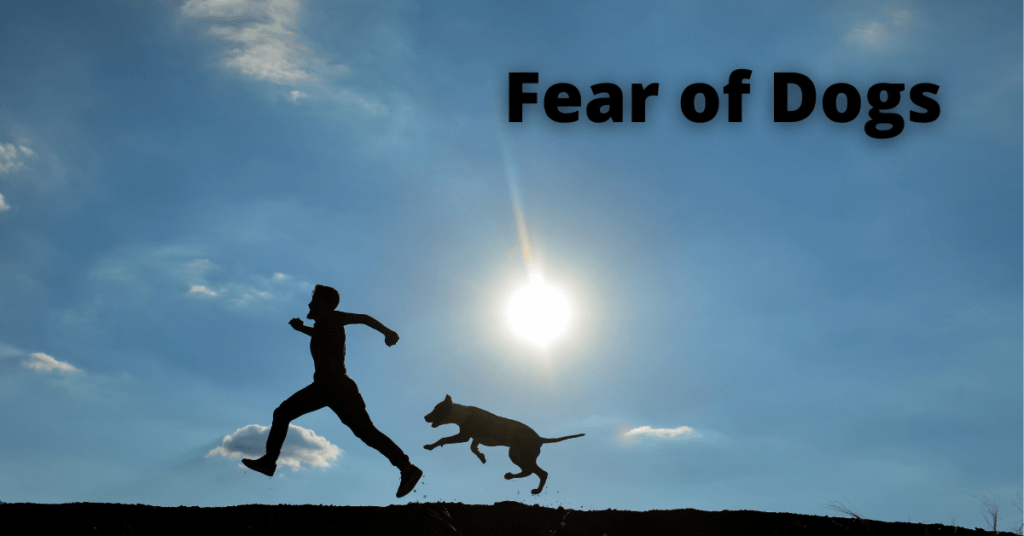Many people have a fear of dogs, and it can be very difficult to understand why. This blog post will discuss the symptoms, diagnosis, and treatment for dog-related fears.
Contents
What Is Fear of Dog?
 Fear of dogs is a phobia that primarily consists of irrational fear and avoidance of dogs. While it is quite common for people to be afraid or anxious around dogs, particularly if they have been bitten or attacked by them in the past, those with dog phobias will show symptoms well beyond what would normally be considered as “normal” anxiety. There is a term called cynophobia for the fear of dogs.
Fear of dogs is a phobia that primarily consists of irrational fear and avoidance of dogs. While it is quite common for people to be afraid or anxious around dogs, particularly if they have been bitten or attacked by them in the past, those with dog phobias will show symptoms well beyond what would normally be considered as “normal” anxiety. There is a term called cynophobia for the fear of dogs.
This fear of dogs can interfere with someone’s life in a number of ways, preventing them from going about their everyday activities or even leaving their home.
This dog fear can also cause other problems, such as physical reactions.
How Common Is Fear of Dogs?
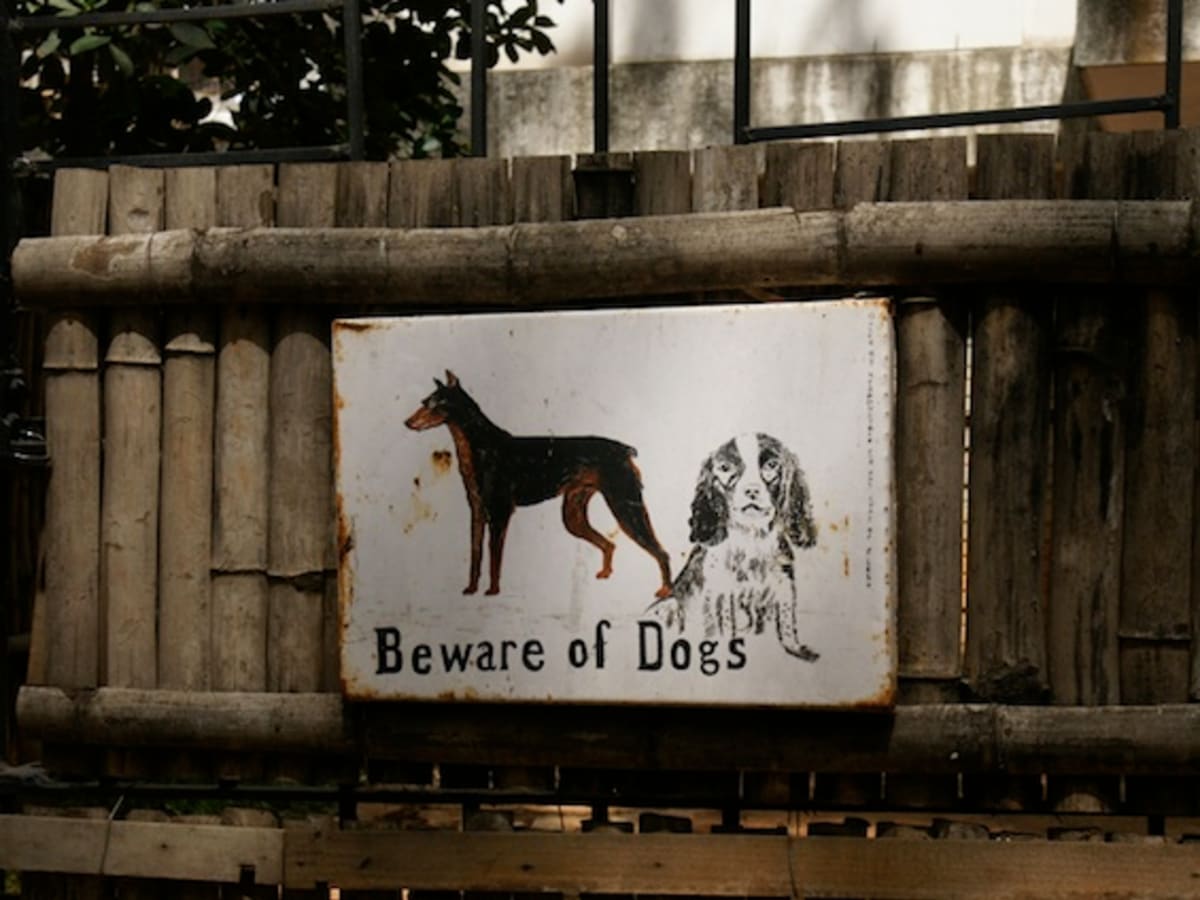
The fear of dogs is one of the most common specific phobias that people suffer from. It affects about 15 percent of all adults, and almost ten million will be affected by this dog phobia at some point during their lives.
Females are more likely to suffer from cynophobia than males. However, it can affect any age group or demographic equally. This is except for very young children. While not everyone who has a fear or anxiety around dogs suffers from an official diagnosis like cynophobia, many sufferers do find themselves unable to interact with them in public settings without experiencing feelings of panic. Those who have no choice but to spend time around animals may even experience physical symptoms. These are such as nausea and vomiting when doing so. These symptoms can be debilitating and make it difficult for people to lead normal lives.
Symptoms of Fear of Dogs
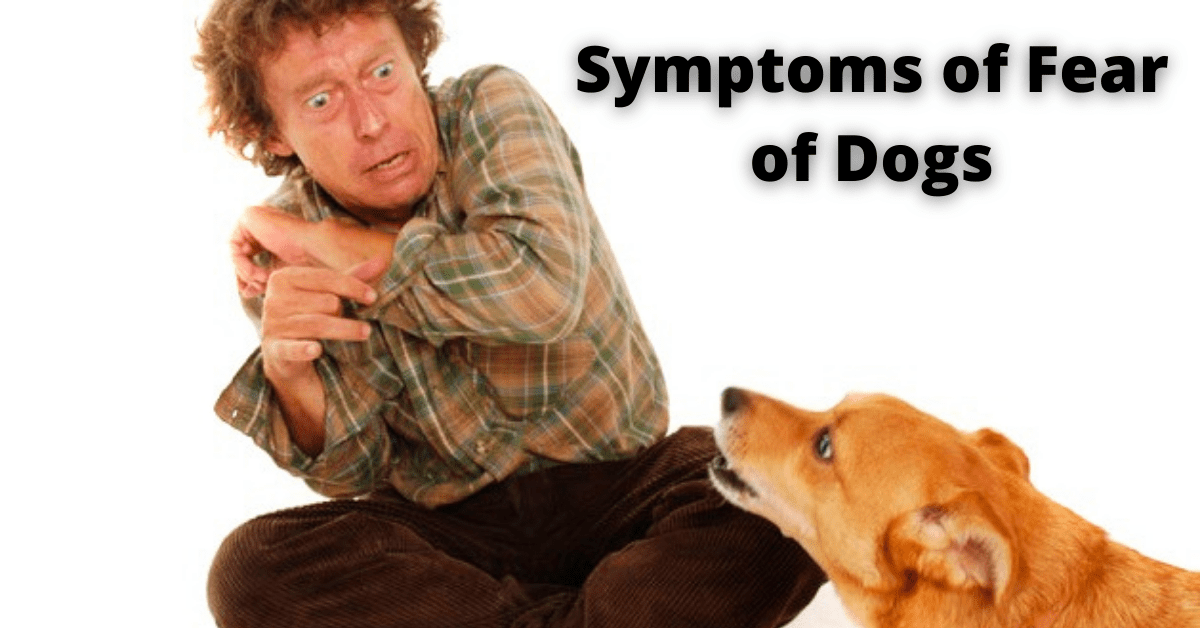
These are some of the symptoms of fear of dogs:
Avoiding Eye Contact With Dogs
This is often one of the first signs that someone is afraid of dogs. People with cynophobia may avoid looking at dogs, even if they are not close to them.
Keeping Dogs At Distance
People with a fear of dogs will typically keep a distance between themselves and any dog, regardless of size or breed. This can manifest as staying far away from a dog on the street or crossing the street to avoid them.
Increasing Anxiety Around Dogs
People with cynophobia often experience extreme anxiety around dogs, which can result in physical symptoms such as a racing heart rate, sweating, and nausea. In some cases, people may even have a panic attack when near a dog.
Refusing To Touch Or Be Near Dogs
In addition to avoiding dogs, people with cynophobia may also refuse to touch them or be near them in any way. This can include not allowing a dog to come close to them, being hesitant to pet a dog, and even avoiding walking near areas where there are stray dogs.
Sleeping Difficulty
Research has shown that people with a dog fear may experience sleep difficulties due to nightmares or anxiety. This can also be the case for children who have a fear of dogs.
Feeling Danger From Dogs
Some people with a fear of dogs may also believe that they are in danger from the animals. This can be due to a past negative experience or even just hearing myths about dog behavior, such as their tendency to attack anyone who is running away. People with this belief may worry about being on the street alone and avoid going out after dark for fear of getting attacked by a stray dog.
Causes of Fear of Dogs
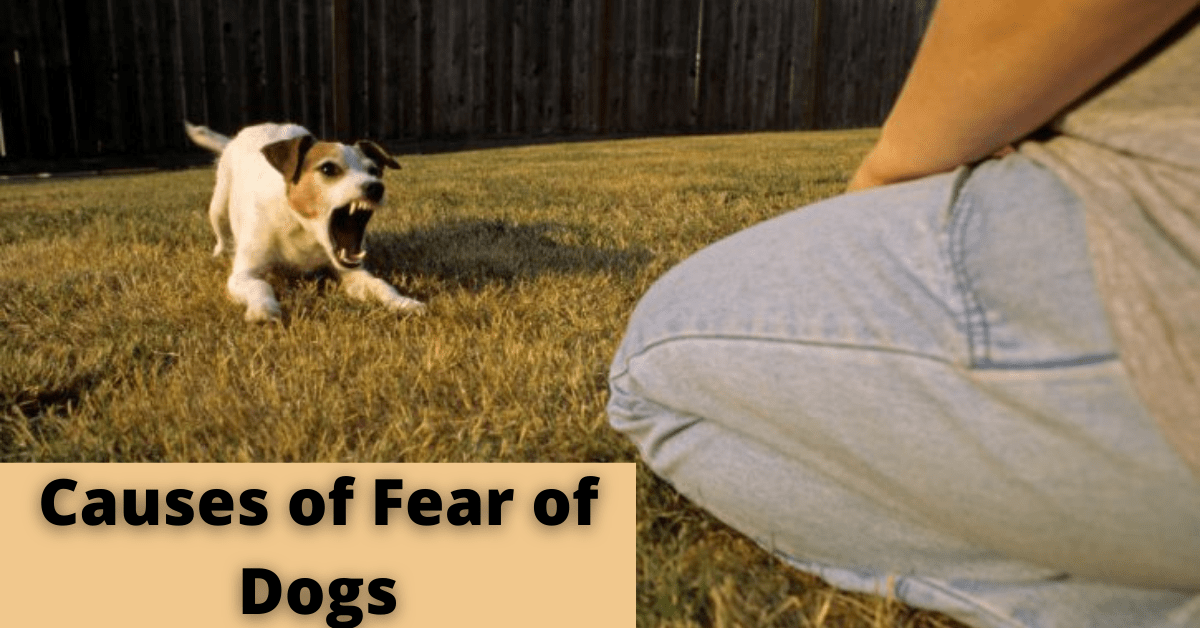
There are many possible causes for this phobia, which will vary from person to person:
Being Bitten Or Attacked By Dog
Some dogs are very aggressive and can be unpredictable in certain situations. If someone was bitten by a dog after trying to pet it without permission or if they were approached by an unknown dog on the street, it’s not surprising that they would develop fears about being around them again. There have also been cases where children have had traumatic experiences with dogs when playing games such as “playing dead” while wrestling with their friend’s parent’s pup. The effects on some kids can be long-lasting, leading to cynophobia as an adult.
Witnessing Dog Bite Incident
Seeing someone else being bitten or attacked by a dog can leave lasting psychological effects, even if the person wasn’t personally involved in the incident. This can cause people to become fearful of all dogs, regardless of their temperament or size.
Myths And Stories About Dogs
There are many myths and stories about dogs that can contribute to someone’s fear of them. For example, hearing about how some breeds are more likely to attack or knowing about cases where children were killed by dogs may give rise to irrational fears.
Negative Experiences With Handling Dogs
Some people may have had bad experiences while trying to pet or handle a dog. This could have been due to not asking the owner for permission or being too rough with their pet, leading them to become nervous around other dogs in the future.
Diagnosis of Fear of Dogs
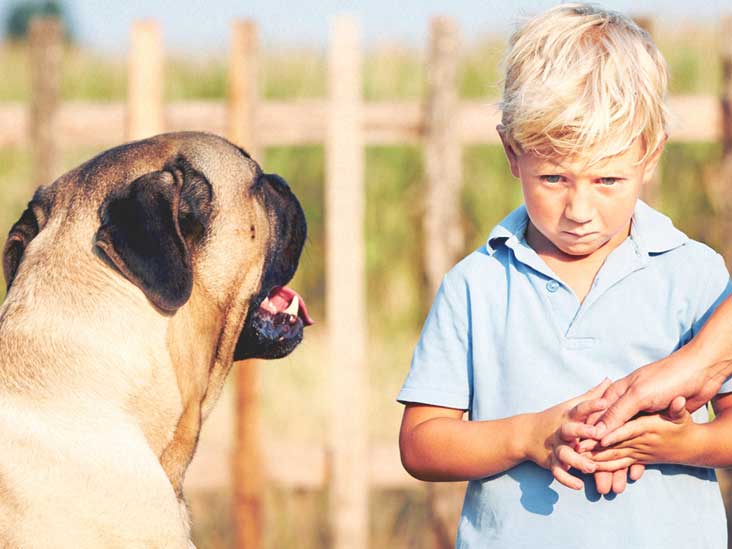
If you are experiencing any of the symptoms listed above and believe that you may have cynophobia, it’s important to seek out a diagnosis from a qualified mental health professional. This can be done through two methods:
Self-Evaluation
One way to determine if you may have cynophobia is to take a self-evaluation quiz. This can be found online or in books about phobias. While this isn’t a conclusive diagnosis, it can help you to better understand your feelings and whether or not seeking professional help is the right step for you.
Professional Evaluation
If you feel that you may have a fear of dogs, it’s important to seek out professional help from a therapist or counselor who specializes in phobias. They will be able to ask you questions about your past experiences with dogs as well as any current fears that you may have. From there, they will be able to create a treatment plan tailored specifically for you.
Treatment of Fear of Dogs
There are many treatment options available for those who suffer from a fear of dogs. Some people may only need a single session with a therapist in order to work through their fears. Others may require more time and support in order to feel comfortable around canines again. The most common treatment methods are listed below:
Exposure Therapy
This type of therapy involves slowly introducing the person to dogs in a safe and controlled setting. This could be done by visiting a friend or family member’s house where there are pets, going to a park that is known for its dog-walking population, or even volunteering at an animal shelter. By gradually exposing the person to different types of dogs in various settings, they will become more comfortable around them over time.
Cognitive Behavioral Therapy
Many people become fearful or anxious around dogs because of the negative thoughts that they have about them. A therapist will try to identify and replace these thoughts with more positive ones in order to change how a person feels, thinks, and behaves when they are around canines. For example, if someone believes that all dogs are dangerous and should be avoided at all costs, a professional may encourage them to think of one type of dog breed that is especially friendly instead. This would allow their mind to associate positive feelings towards certain types of pups while discouraging fear-inducing associations with others.
Medications
In some cases, medications may be prescribed in order to help a person manage their fear of dogs. This could be done in conjunction with other forms of treatment or on its own. Some people may find that medications help them to feel more relaxed when around canines while others may experience fewer panic attacks and anxiety symptoms.
Support Groups
For some people, talking to others who have similar fears can be very helpful. This could be done in person or online through social media platforms or forums. By sharing experiences and advice, those in a support group can help one another to feel more comfortable and less alone when it comes to their fear of dogs.
Prevention of Fear of Dogs

There are many steps that people can take in order to prevent the development of cynophobia. Some of these are:
Learn To Cope With Your Anxiety
Since anxiety is a common symptom of the fear of dogs, those who struggle with it should try to find ways to feel calm and relaxed. This could be done through mindfulness practices such as meditation or yoga. Other forms of treatment may also help. This is because they can provide coping mechanisms for when symptoms do arise, such as taking deep breaths and distracting the mind from focusing on negative thoughts about dogs.
Avoidance Is Not Answer
For many people who suffer from phobias like cynophobia, avoidance is seen as one way that they can cope. This is without having to confront their fears head-on. However, this thinking only reinforces that fear by making them avoid more places. It is where dogs are present rather than facing each situation individually. This can be until it becomes less scary.
Educate Yourself on Dogs
The more a person knows about dogs, the less likely they are to be fearful of them. This could mean reading articles and stories about dog-human interactions, watching videos of puppies playing, or even visiting an animal shelter to meet different types of canines. By gaining a better understanding of how dogs behave and what their characteristics are, people will feel more confident in their ability to interact with them.
Practise Interaction in Safe Settings
If someone is scared of dogs, they should start by practicing interaction with them in safe settings. This could involve visiting a friend or family member’s house. These are where there are pets, going to a park that is known for its dog-walking population. This is even volunteering at an animal shelter. By gradually exposing the person to different types of dogs in various settings, they will become more comfortable around them over time.
Conclusion
In conclusion, the fear of dogs is a very common phobia that can be treated in a variety of ways. Therapists may use different techniques. These are such as cognitive behavioral therapy, medication, and support groups. It is in order to help people manage their fears and anxiety symptoms. It is important for those who suffer from cynophobia to understand that avoidance is not the answer. They should know that gradual exposure to dogs in safe settings can help them to overcome their fear.
If you are looking for affordable Online Counseling MantraCare can help: Book a trial therapy session
